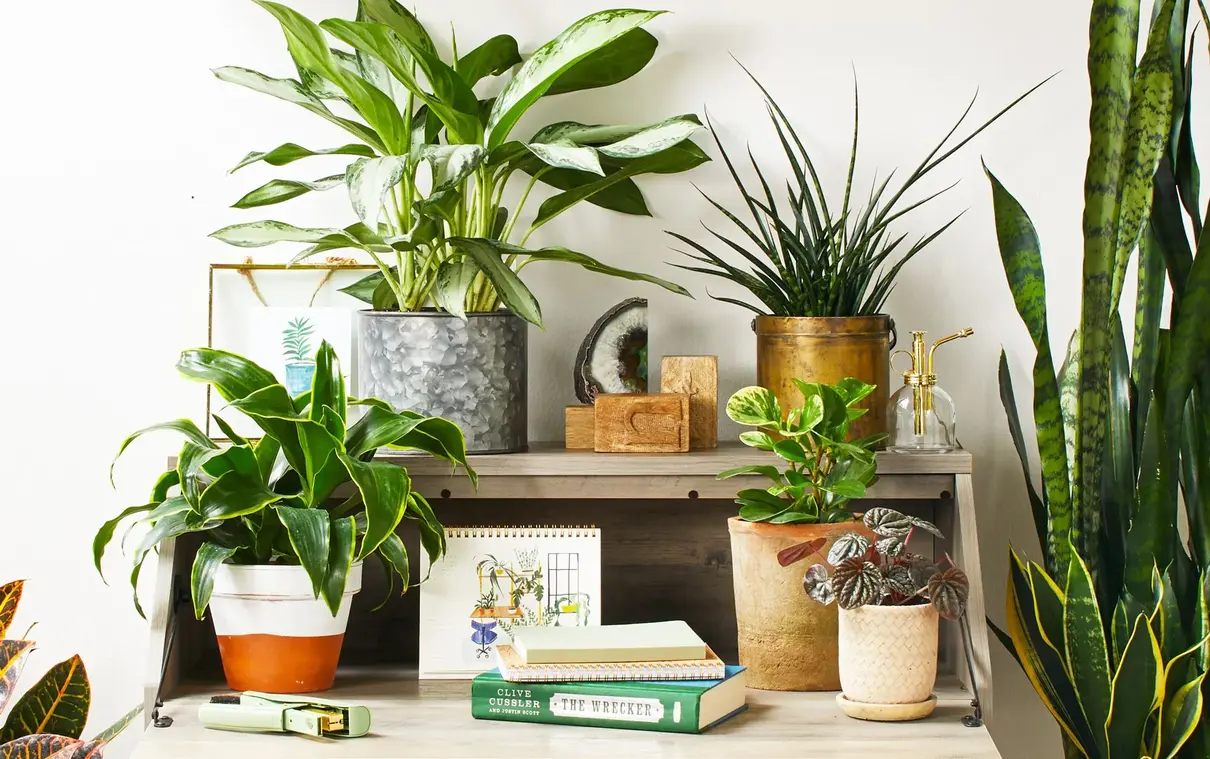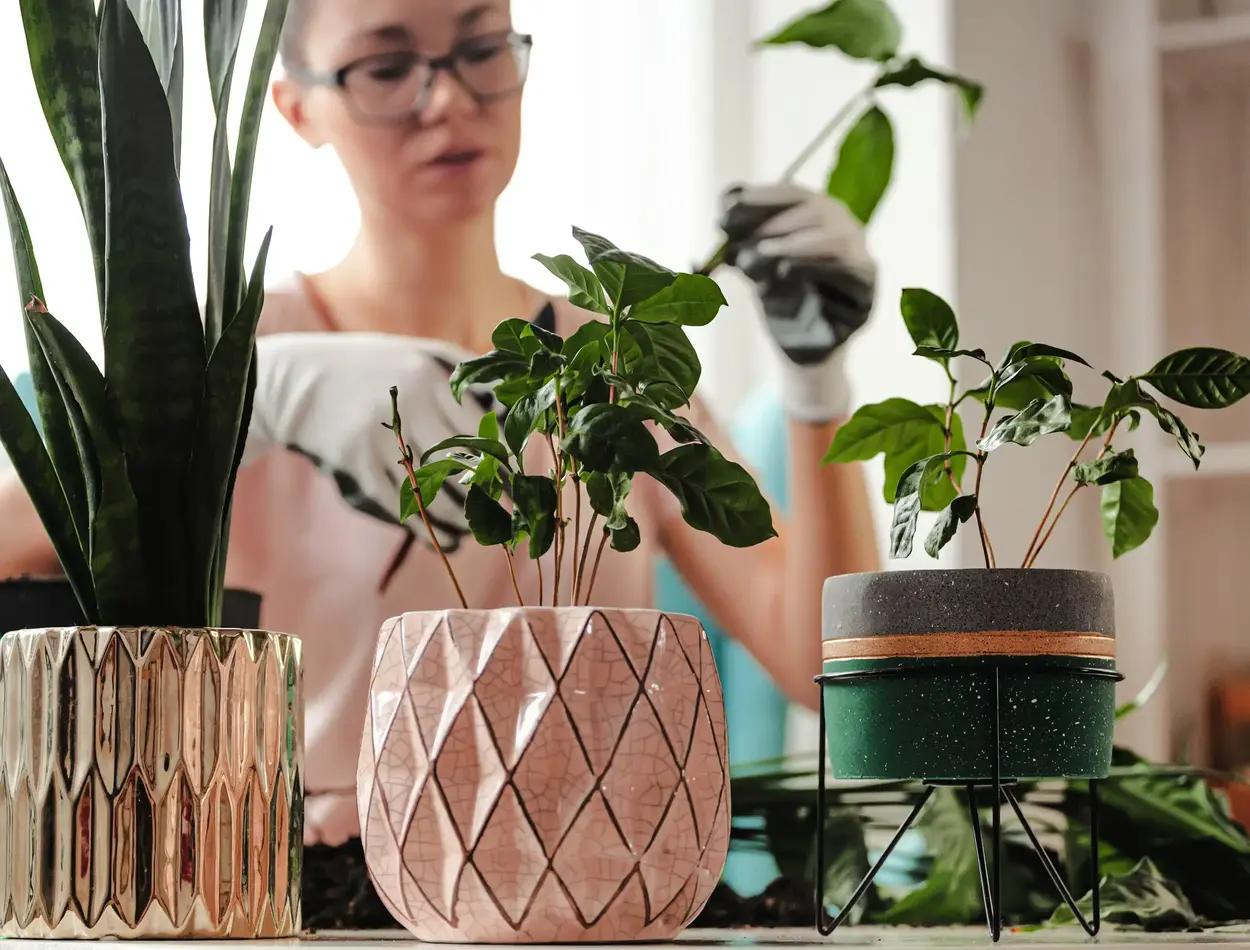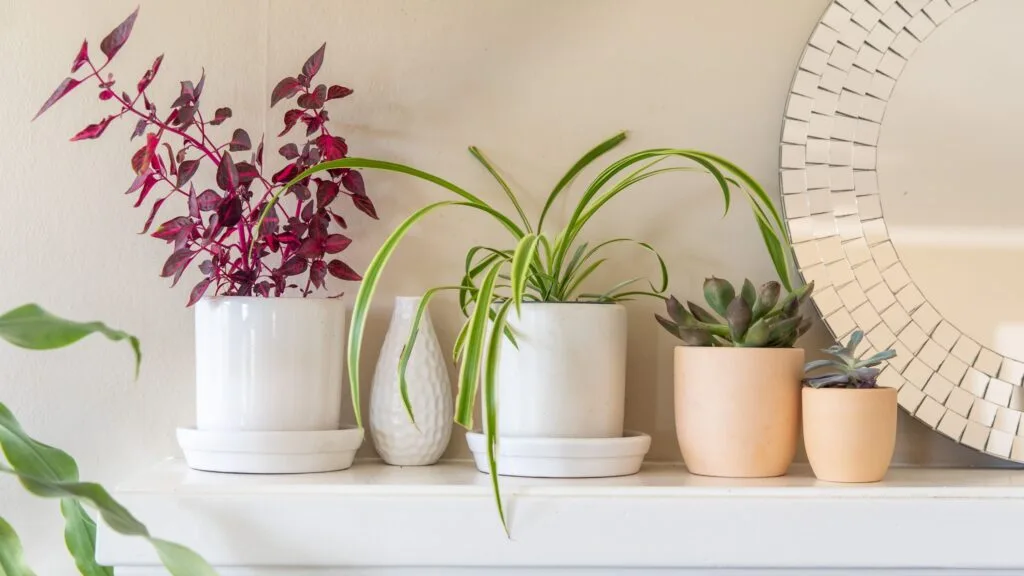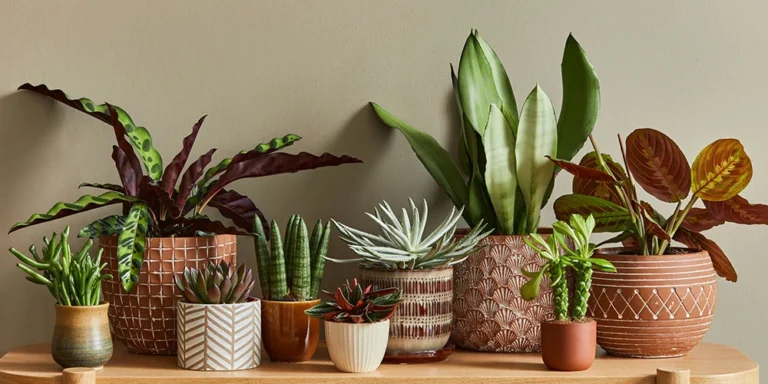Contents
Introduction
Are you looking to add a touch of green to your apartment but feel overwhelmed by the choices of plant containers? You’re not alone! Choosing the right containers for your indoor plants is a crucial step in creating a thriving home garden, especially when you’re working with limited space.
Why Bother with Apartment Plants?
First off, why should you consider growing plants in your apartment? Well, apartment plants do more than just brighten up a room. They help purify the air, boost your mood, and even improve your overall well-being. Plus, caring for plants can be a relaxing and rewarding hobby. But before you dive in, picking the right containers is key to ensuring your plants grow healthy and strong.
What Makes the Right Container?
Now, let’s talk about what makes a container suitable for your plants. Simply put, the right container supports your plant’s growth and fits well within your living space. You want to consider things like size, material, and drainage—don’t worry, we’ll break it all down for you in plain terms.
Choosing Containers: Why It Matters
Here’s the deal: not all containers are created equal. Some are perfect for small, cozy plants, while others are designed to handle larger, more demanding ones. Plus, different materials and sizes can impact how well your plants grow. A container that’s too small might stunt your plant’s growth, while one that’s too big can make it harder to manage water and nutrients.
In this guide, we’ll walk you through the ins and outs of choosing the best containers for your apartment plants. We’ll cover everything from understanding what your plant needs to how different materials and sizes affect growth. Whether you’re new to indoor gardening or looking to refresh your space, this guide will help you make informed choices that fit both your plants’ needs and your apartment’s style.
Ready to get started? Let’s dive into the world of plant containers and find the perfect match for your green friends!
Understanding Plant Needs
So, you’re ready to choose the perfect containers for your apartment plants, but first, let’s get to know what your plants really need. This is a crucial step because the right container can make a huge difference in how well your plants grow and thrive.

Types of Plants and Their Needs
Not all plants are the same, and understanding their specific needs is key. Here’s a quick rundown:
- Herbaceous Plants: These are your classic, leafy green plants. They usually need a bit more space for their roots and prefer containers with good drainage to keep their roots from sitting in water. If you’re growing herbs like basil or mint, look for containers that let excess water escape easily.
- Succulents and Cacti: These plants are super low-maintenance and thrive in drier conditions. They don’t need as much space for their roots, but they do need a container that helps them dry out quickly. Think about containers with good drainage holes to keep them happy.
- Foliage Plants: These are plants primarily grown for their attractive leaves, like peace lilies or pothos. They can vary in size, so you’ll need to match the container size with how big you expect your plant to get. They also need containers that let water drain out to prevent overwatering.
Growth Requirements
Here’s a simple way to think about it: Your container needs to support your plant’s growth. Here’s what you should keep in mind:
- Root Space: Plants need room for their roots to grow. A container that’s too small can restrict growth, while one that’s too large might make it harder for the plant to absorb nutrients. Aim for a container that gives your plant a bit of extra room to grow but isn’t overly spacious.
- Drainage Needs: Proper drainage is crucial for plant health. Without it, water can build up at the bottom of the container, leading to root rot. Make sure your container has drainage holes or consider using a saucer to catch excess water.
- Light Conditions: Think about where you’ll place your plant in your apartment. Some containers work better in bright, sunny spots, while others are better for shadier areas. The container’s material can also affect how it handles light—some materials can get hot and dry out the soil faster.
By understanding what your plant needs and how different containers can meet those needs, you’ll be on your way to creating a thriving indoor garden. Ready to choose the right container for your plant? Let’s dive into the different types of materials available!
Container Materials
When it comes to choosing the right container for your apartment plants, the material can make a big difference. Each type of container material has its own pros and cons, so let’s break them down in simple terms.

Plastic Containers
Plastic pots are a popular choice, and for good reason:
- Pros: They’re lightweight, which makes them easy to move around. They’re also affordable and come in a wide variety of shapes and sizes. Plus, they’re pretty versatile and can fit just about any plant.
- Cons: They don’t breathe as well as some other materials, which means they can hold moisture longer and might not be ideal for plants that prefer drier conditions. Over time, plastic can become brittle or discolored.
Ceramic and Terracotta Pots
Ceramic and terracotta pots have a classic look that many people love:
- Pros: They’re aesthetically pleasing and come in lots of styles and colors. These pots are also quite breathable, which helps with air circulation around the roots and can prevent overwatering.
- Cons: They’re heavier, which can make them a bit cumbersome to move. Terracotta, in particular, tends to dry out the soil faster, so you might need to water more often. They can also be more prone to cracking if the soil dries out too quickly.
Metal Containers
Metal pots bring a modern touch to your indoor garden:
- Pros: They’re durable and offer a sleek, contemporary look. Metal containers are also sturdy and can handle larger plants without tipping over.
- Cons: They can heat up quickly, especially in sunny spots, which can cause the soil to dry out faster. Plus, metal can rust over time, especially if it’s not coated or treated.
Wood Containers
Wooden pots can add a natural, rustic charm to your space:
- Pros: They’re great for insulation, which helps keep the soil at a more stable temperature. Wood also blends well with various interior styles, giving your plants a cozy, homey feel.
- Cons: Wood requires maintenance to prevent rot, especially if it’s exposed to moisture frequently. It might need to be treated or sealed to last longer.
Eco-friendly Options
If you’re into sustainability, there are some great eco-friendly container choices:
- Pros: Containers made from bamboo, recycled plastics, or other sustainable materials help reduce environmental impact. They often come with unique designs that can add a touch of creativity to your plant display.
- Cons: Some eco-friendly containers might not be as durable or widely available as traditional options. They can also vary in price depending on the material and design.
Choosing the right container material is about finding a balance between functionality and style. Consider how each material fits with your plant’s needs and your personal taste, and you’ll be well on your way to creating a beautiful and healthy indoor garden. Ready to dive into size and shape considerations? Let’s explore how the right dimensions can make all the difference!
Size and Shape Considerations
When it comes to picking the perfect container for your apartment plants, size and shape matter more than you might think. Choosing the right dimensions can help your plants thrive and fit seamlessly into your living space. Let’s break down what you need to know.

Small Containers
Small pots are great for compact plants or herbs:
- Best For: Tiny plants like succulents, small herbs, or seedlings. They’re ideal for plants that don’t need a lot of space to grow.
- Benefits: They’re perfect for tight spaces or for placing on shelves and windowsills. They’re also easier to move around and take up less room, which is great for apartments where space is limited.
Medium Containers
Medium-sized pots offer a bit more flexibility:
- Best For: Mid-sized plants like ferns, small shrubs, or flowering plants. These containers accommodate a wider range of plants that need a bit more space for their roots.
- Benefits: They provide a good balance between size and manageability. You can use them in various spots around your apartment, from coffee tables to side tables, without taking up too much room.
Large Containers
Large pots are designed for bigger plants:
- Best For: Larger indoor plants like small trees, large ferns, or multiple plants grouped together. They give ample space for roots to spread out and grow.
- Benefits: They require less frequent watering because they hold more soil and moisture. They’re great for creating a statement piece in your apartment, such as a corner plant or a large plant stand.
Shapes and Designs
The shape of your container can impact both aesthetics and functionality:
- Round vs. Square: Round containers are classic and can fit into corners or snug spots, while square pots are great for maximizing space and can look more modern. Choose based on your available space and personal style.
- Hanging Baskets: If floor space is tight, hanging baskets are a fantastic option. They bring a touch of greenery to the air space and are perfect for trailing plants like pothos or ivy.
- Wall-mounted Planters: These are perfect for creating vertical gardens and saving precious floor space. They’re great for smaller plants and can add a creative, eye-catching element to your walls.
Choosing the right size and shape for your plant containers helps ensure that your plants have enough room to grow while fitting nicely into your apartment’s layout. Whether you’re working with small herbs or large statement plants, finding the right container size and shape will help your indoor garden flourish. Ready to explore drainage and watering needs? Let’s dive into how these factors play a crucial role in keeping your plants healthy!
Drainage and Watering
When it comes to keeping your apartment plants happy and healthy, drainage and watering are key factors you can’t overlook. The right container will not only help manage water but also prevent common problems like root rot. Let’s dive into why these elements are so crucial and how to get them right.
Importance of Drainage
Proper drainage is vital for plant health. Here’s why:
- Preventing Root Rot: Root rot happens when water sits at the bottom of the container and the roots can’t get enough air. This can cause your plant’s roots to decay, which can lead to the plant’s overall decline. Good drainage helps keep excess water away from the roots, reducing the risk of rot.
- Drainage Holes: Most containers come with drainage holes, which allow excess water to escape. Make sure your pot has these holes or consider drilling some if it doesn’t. If you’re using a decorative pot without drainage holes, you can place a plastic pot inside it for the plant to sit in.
Watering Needs
Different plants have different watering needs, and the container can affect how often you need to water:
- Self-Watering Containers: These pots have a built-in reservoir that supplies water to the plant as needed. They’re perfect if you want to reduce the frequency of watering and ensure consistent moisture levels.
- Wicking Systems: Some containers come with a wicking system, which uses a rope or fabric to draw water from a reservoir up into the soil. This can be particularly helpful for plants that need a steady supply of moisture but are sensitive to overwatering.
Tips for Managing Water
- Check Soil Moisture: Before watering, check the soil moisture. Stick your finger about an inch into the soil; if it feels dry, it’s time to water. If it’s still moist, wait a bit longer.
- Avoid Overwatering: Too much water can be just as harmful as too little. Ensure your container’s drainage is adequate to help prevent overwatering issues.
- Use Saucer Trays: If your container doesn’t have drainage holes, you can use a saucer tray underneath to catch excess water and prevent spills.
Understanding how drainage and watering work together will help you keep your plants in top shape. With the right container and watering practices, you’ll be well on your way to a thriving indoor garden. Ready to explore how aesthetics and design play a role in choosing your containers? Let’s see how style and function can go hand-in-hand!
Aesthetic and Design Considerations
When choosing containers for your apartment plants, aesthetics and design play a big role in making sure your plants not only thrive but also enhance your living space. The right container can complement your home decor and turn your plants into stylish focal points. Let’s explore how to make design choices that work for both your plants and your space.
Matching Decor
Choosing containers that fit well with your apartment’s decor is key to creating a harmonious look:
- Color and Style: Think about the color palette and style of your space. If you have a modern, minimalist decor, sleek, simple containers in neutral colors might be best. For a more eclectic or bohemian style, you might opt for colorful or patterned pots that stand out.
- Material Matching: The material of your containers should also complement your decor. Ceramic or terracotta pots can add a touch of classic charm, while metal or concrete pots might suit a more industrial look. Consider how the material of the container fits with the rest of your furnishings and design elements.
Personal Preference
Personalizing your plant containers can add a unique touch to your space:
- Customizing Containers: Get creative with DIY projects! You can paint or decorate plain pots to match your personal style. Adding personal touches can make your indoor garden feel more like a reflection of your personality.
- Trends: Stay on top of popular container trends if you want to incorporate current design styles. For example, macramé hangers and geometric planters are trendy options that can add a modern flair to your space.
Practical Tips
- Mix and Match: Don’t be afraid to mix different styles and sizes of containers. This can create an interesting visual effect and help to highlight different plants in your collection.
- Balance: Aim for a balance between aesthetics and functionality. While a beautiful container can enhance your decor, make sure it also meets the needs of your plant in terms of size, material, and drainage.
Choosing the right containers isn’t just about the practical aspects—it’s also about creating a space where your plants and decor work together harmoniously. With a bit of thought and creativity, you can find containers that not only support your plants’ health but also elevate the look of your apartment. Ready to dive into some practical tips for managing your plant containers? Let’s explore how to keep your indoor garden looking and performing its best!
Practical Tips for Apartment Plant Containers
Now that you’ve got a handle on choosing the right containers for your apartment plants, let’s dive into some practical tips to ensure your plants stay healthy and your space remains stylish. Managing plant containers effectively can make a big difference in the success of your indoor garden.
Portability
Being able to move your plants around easily is important for both their health and your convenience:
- Movable Containers: Opt for containers with handles or wheels if you anticipate needing to move them frequently. This makes it easier to reposition your plants to catch the best light or adjust for seasonal changes.
- Furniture Integration: Consider using planters as part of your furniture. Plant stands, tiered shelves, or built-in planters in tables and other furniture can save space and add a stylish touch while keeping your plants accessible and visible.
Maintenance
Keeping your plant containers in good shape helps ensure your plants thrive and your space stays clean:
- Cleaning: Regularly clean your containers to prevent the buildup of dirt and algae, which can attract pests and mold. For most containers, a simple wash with soap and water will do the trick. For ceramic or terracotta pots, you may need a bit of scrubbing to remove stubborn stains or mineral deposits.
- Seasonal Care: Adapt your container care to the changing seasons. In winter, plants may need less frequent watering as they enter a period of slower growth. In summer, you might need to water more often and check for signs of overheating in your containers.
Additional Tips
- Use a Drip Tray: Place a drip tray underneath your containers to catch excess water and protect your floors or furniture from water damage. It also helps manage any mess created during watering.
- Add Mulch: A layer of mulch on top of the soil can help retain moisture and reduce the frequency of watering. It also helps prevent weeds and keeps the soil temperature consistent.
- Monitor Plant Health: Regularly check your plants for signs of overwatering, underwatering, or pest infestations. Adjust your care routine based on their specific needs and the type of container you’re using.
By following these practical tips, you’ll be able to maintain a beautiful and healthy indoor garden, making sure your apartment plants flourish while keeping your space neat and functional. Ready to wrap things up? Let’s summarize everything and offer some final tips for choosing and caring for your plant containers!
Conclusion
You’ve navigated through the essentials of choosing the best containers for your apartment plants, from understanding plant needs to picking the right materials and sizes. Now, let’s wrap it all up and solidify what you’ve learned.
Summary of Key Points
Choosing the right container is more than just picking something that looks nice. It’s about finding a pot that matches your plant’s needs and fits well within your living space. Here’s a quick recap of what to consider:
- Plant Needs: Different plants have different requirements for root space, drainage, and light. Make sure the container you choose meets these needs to keep your plants healthy and thriving.
- Container Materials: Whether you go for plastic, ceramic, metal, or eco-friendly options, each material has its pros and cons. Choose one that balances aesthetics with functionality and suits your plant’s needs.
- Size and Shape: Match the container size with your plant’s growth potential. Consider the shape of the container to fit your space and style, from small pots to large planters and everything in between.
- Drainage and Watering: Proper drainage is crucial to avoid root rot, and the right container can help manage watering needs. Look for containers with good drainage or consider self-watering options if you prefer low-maintenance care.
- Aesthetic Considerations: Choose containers that complement your apartment’s decor and reflect your personal style. Whether you opt for trendy designs or DIY customizations, make sure the containers enhance both your plants and your living space.
- Practical Tips: Remember to choose containers that are easy to move, clean regularly, and adapt your care routine to seasonal changes. Using drip trays and mulch can also help maintain a healthy and tidy indoor garden.
Final Tips
Experiment and have fun with your plant container choices. There’s no one-size-fits-all solution, so don’t be afraid to try different styles and sizes to see what works best for your plants and space. Keep observing and adjusting based on your plants’ responses and your personal preferences.
Your indoor garden can be a beautiful and enriching part of your home, bringing nature indoors and enhancing your living environment. With the right containers and care, you’ll create a thriving green oasis in your apartment. Happy planting!
Resources and Further Reading
For those who want to dive deeper into apartment gardening, there are plenty of resources available:
- Books and Guides: Look for books on indoor gardening and container care for more detailed information and inspiration.
- Online Resources: Explore gardening websites, forums, and social media groups for tips, advice, and community support.
With these resources and the knowledge you’ve gained, you’re all set to create a vibrant and thriving indoor garden. Enjoy the process and the beauty your plants bring to your apartment!



